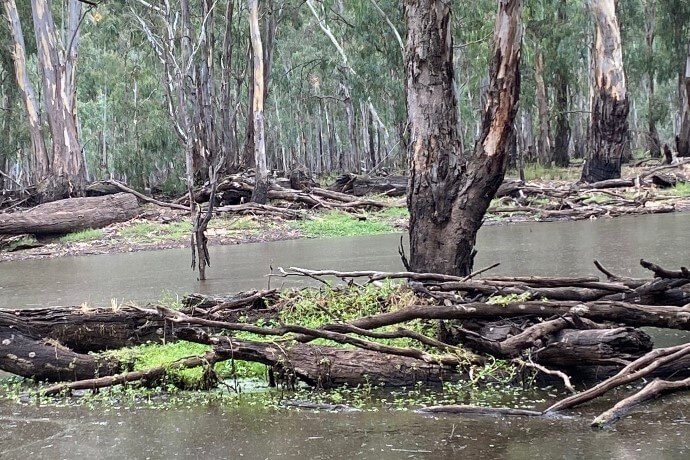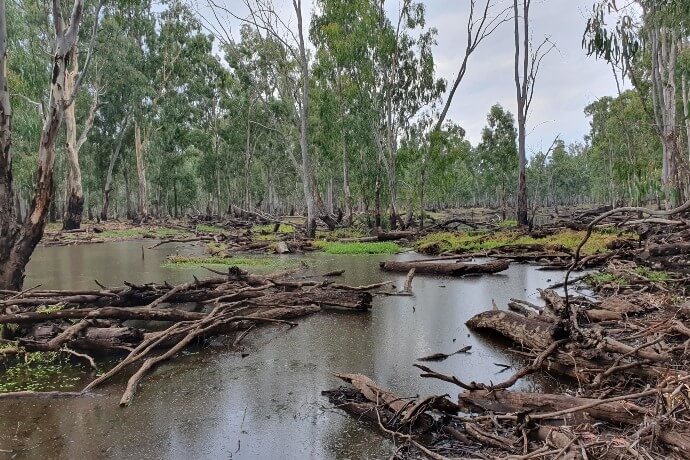On 28 and 29 March 2023, the Murray and Lower Darling Environmental Water Advisory Group (EWAG) met for a field trip to Koondrook-Perricoota (KP) Forest and Millewa Forest in Murray Valley National Park.
Koondrook-Perricoota Forest
On 28 March, EWAG members visited KP and heard about plans to better manage water in the forest. Adaptive management of flows in KP has allowed water managers to increase the effectiveness of water deliveries for a healthy river system and forest.
The natural inundation regime in KP requires the Goulburn and Murray Rivers to reach certain levels at the same time. River regulation has reduced the frequency of this inundation, but mechanisms are in place for water to be delivered to KP from the Murray when needed.
Flows into KP are also affected by fallen trees and debris forming natural dams. Water managers are finding it difficult to find water delivery solutions that satisfy Integrated Forestry Operations Approvals guidelines. The EWAG is supportive of removing log blockages for better forest health and water management.
EWAG members were told there is extremely strong community support for their work and the KP management team believes the community needs to be involved in the future of the forests.
Murray Valley National Park
On 29 March, the EWAG visited Reed Beds Bird Hide. Monitoring of the Australasian bittern began here in 2015, with only 4 or 5 birds recorded. Last year there were 19 bitterns recorded after several wet seasons and water for the environment flows that considered bittern requirements.
Recordings of bitterns in the area are being taken using acoustic recorders. The recordings capture bitterns over a 24-hour period, providing insights that would not have been possible using previous observation methods. This includes revealing that bitterns stopped calling during the flood times.
Good Australasian bittern numbers were also recorded in the Lachlan and Murrumbidgee. The group noted that there is still a lot to learn about the secretive birds.
In January 2023, 1,400 colonial nesting waterbird (ibis and spoonbills) nests were counted by a drone survey.
The EWAG then visited 9 Panel Lagoon and discussed the National Parks and Wildlife Service NSW Fish Recovery Strategy (FRS) and plans for this site. The lagoon is permanently inundated and until recently did not have any carp. Soil samples have been taken to determine historical flow patterns of the wetlands. The group discussed habitat improvement and impacts from riverbank erosion, such as sediment build-up in wetlands and creeks through the forest.
The next step is to reintroduce submerged vegetation in the lagoon to encourage biofilm and algae and to provide structural habitat to support future populations of small-bodied native fish. Drought and climate change management strategies are also part of the overall FRS.
The last stop on the EWAG field trip was at the Mary Ada regulator, which is important for river regulation but interrupts fish passage. When the regulators are shut, fish can be trapped behind them and isolated from the rivers. To minimise this risk, regulator operations have been adjusted to mimic the natural pulses of water flows and signal to the native fish to exit the forest creeks and return to the rivers.

